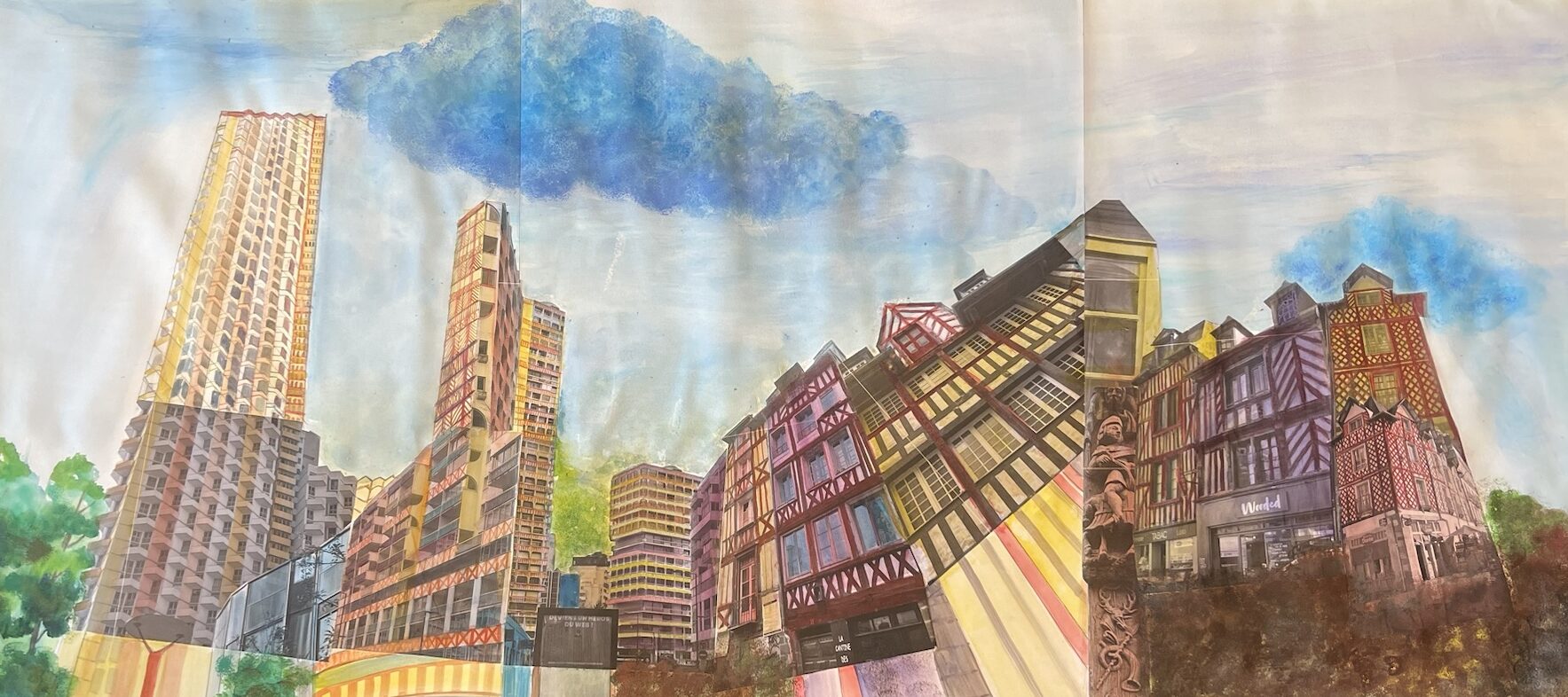Cultural discovery and student engagement
On my first visit to Rennes, the half-timbered buildings immediately captivated me. Perfect embodiments of the fusion between tradition and modernity, these structures are very different from what I know in my country, Bangladesh. Highly decorated and colorful, they particularly appealed to me, offering a striking contrast to the modern architecture also found in the city.
As a student at the University of Rennes 2, I have had the opportunity to get involved in several activities alongside my studies. For example, I volunteer for AFEV, an organization that supports children and teenagers in various activities to discover the city. I also participate in the Buddy System, a program that allows meeting French and international students to discover their culture and do sports and visits together.
I have also taken part in the “Mix ta fourchette” activity, which allows exploring cuisines from different cultures. I participated in this activity twice with Erasmus students, which gave me a lot of pleasure in tasting food from different countries and sharing the cuisine of my own country.
Fusion: Tradition and Modernity



I find that Rennes is a fusion of old and modern architecture, allowing one to discover both history and contemporary life. Personally, I greatly appreciate old architecture, but I find modern buildings more practical to live in. However, sometimes these modern structures lack color and joy.
I have a particular sensitivity to architecture because in Bangladesh, I grew up in a house made of raw earth, but my family decided to demolish it to build a new house with fired bricks. In Bangladesh, a very densely populated country, people prefer large modern buildings, which leads to the loss of our architectural heritage. It makes me sad to see this heritage disappearing. I think it is important to adapt and accept changes while preserving our traditions and finding inspiration for the future.
An artistic collage between past and present
This year, with the University of Rennes 2, I participated in a workshop called “Projet Vacéer,” focused on artistic creation and student engagement in public spaces. At first, I felt a bit lost trying to find the connection between my student engagement and the public space. I started drawing different ideas, inspired by my interest in architecture. I took photos of architecture while walking around the city center, particularly of the half-timbered buildings.






I printed the photos, cut out the parts that interested me, and glued these pieces of half-timbered buildings with elements of modern buildings. I hand-drew certain parts to create a unique composition. Using watercolor paint on the photos, I created a panoramic collage of the city of Rennes.



Using photography and printing is a modern technique, while drawing and watercolor are traditional methods. This blend of techniques is essential for my work as it reflects the fusion of old and contemporary architecture. This approach resonates deeply with my life, my artistic passion, and my student involvement in France. It also highlights the importance of culture, the cultural changes between Bangladesh and France, and the evolution between ancient and modern times.


The process of creating this panoramic collage was a true artistic exploration for me. By layering photos of the half-timbered and modern buildings of Rennes, I was able to capture the essence of the city, which harmoniously blends tradition and modernity. The collage technique, combined with watercolor, not only creates a visually pleasing aesthetic but also tells a story. Each brushstroke, each cut, and photo collage symbolises how elements from different eras can coexist and enrich our environment.

Reflection on architectural evolution through art
This artistic project allowed me to reflect on the importance of preserving our heritage while embracing innovation and progress. The half-timbered buildings of Rennes remind me of the ancient structures in my country, while the modern buildings symbolize the future. By combining these elements, I was able to create a piece that celebrates this duality and highlights the necessity of finding a balance between the past and the present.
In conclusion, my experience in Rennes and at the University of Rennes 2 has offered me a valuable opportunity to express myself artistically while engaging with the local community. The “Projet Vacéer” project helped me better understand how my student engagement could translate into a public and artistic context. Through this panoramic collage, I not only explored the architectural richness of Rennes but also discovered a way to connect my cultural roots with my life in France. This experience has strengthened my desire to continue creating works that celebrate diversity and cultural evolution while honouring the traditions that shape our identity.


Leave a Reply